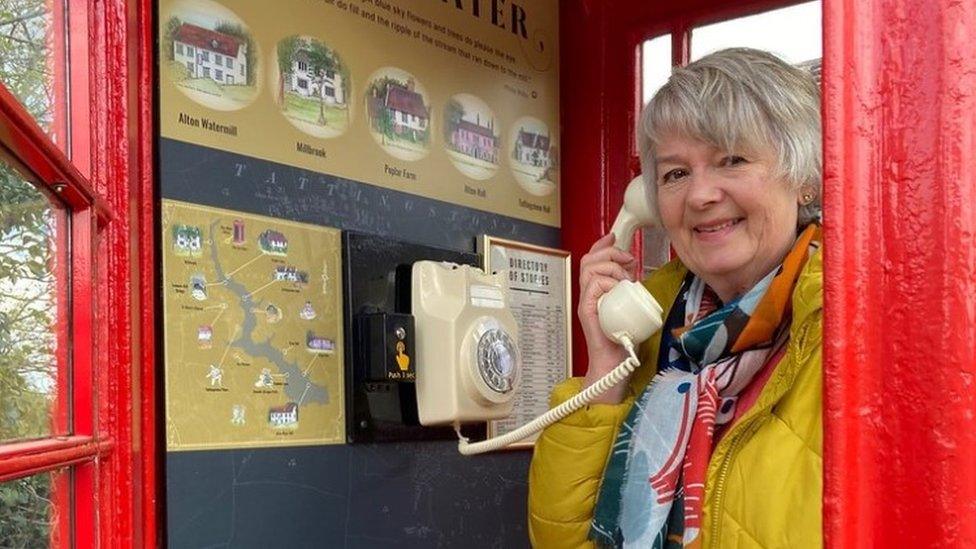Suffolk phone box tells tales of buildings lost to reservoir
- Published

Jane Kirk said some of her favourite archive material was vivid descriptions of the lost landscape
An old red telephone box has been turned into audio booth where people can hear stories of the land and buildings that disappeared when a reservoir was built.
The village of Tattingstone in Suffolk was split in two when Alton Water, external was constructed in the 1970s and 80s.
It was created after it became clear in the 1960s that the water supply for nearby Ipswich was inadequate.
Locals including Griff Rhys Jones have retold stories from the time.
Work on Alton Water, which is owned and managed by Anglian Water, began in 1973.
A dam was created at the Holbrook end of the site, and the reservoir was officially opened by the Princess Royal in 1987.
Alton Hall was one of the buildings that was lost when the reservoir was built
Griff Rhys Jones, who lives in the area, said: "I love to hear stories of any area I'm in"
The two halves of Tattingstone are connected by a bridge over the water
Comedian Rhys Jones said he was delighted to be involved in the telephone box project.
"I love to hear stories of any area I'm in, and this is my own manor, so I am doubly pleased to help," he said.
Rhys Jones reads the oldest testimony, an East Anglian Daily Times article from 1894, while farm owner David Caldwell recalls seeing US servicemen throwing pineapple cans, which were unavailable in the war, into a bomb crater.
School caretaker David Brown reads memories from the archives of playing in the valley, rolling for pigs and skittles and ploughing matches.
The Alton water mill was dismantled and reconstructed at the Museum of East Anglian Life in Stowmarket
Alton Water (looking east with the River Stour estuary in the background) was officially opened in 1987
Jane Kirk, a local history recorder, said picking her favourite audio would be like "choosing a favourite child", but highlights included memories of driving the first motor car in the village in the 1920s.
"There are delightful descriptions of the valley and life there before it was flooded - open meadows, streams with small arched brick bridges that cattle could cross, blackberry fields," she said.
"A boy was sent down the well to rescue a loose bucket because he was the smallest person to get down there and we hear how cross his mother was when she found out.
"The most poignant are the memories of people who have sadly passed on since recording them, and it is important we have their stories and that their families have them too to cherish."
Coverage of the project featured in the in-house Anglian Water newspaper
The Hidden Histories of Alton Water phone box includes illustrations by local artist Denise Hawes, who has captured the area's landmarks and buildings that were lost to the development.
The project was funded by the National Lottery, the government's coastal communities fund and Suffolk County Council.
Tattingstone Hall was also knocked down to make way for Alton Water
Find BBC News: East of England on Facebook, external, Instagram, external and Twitter, external. If you have a story suggestion email eastofenglandnews@bbc.co.uk, external
- Published9 June 2021
- Published10 July 2019
- Published2 October 2018
- Published1 January 2017
- Published4 June 2014
- Published23 June 2013